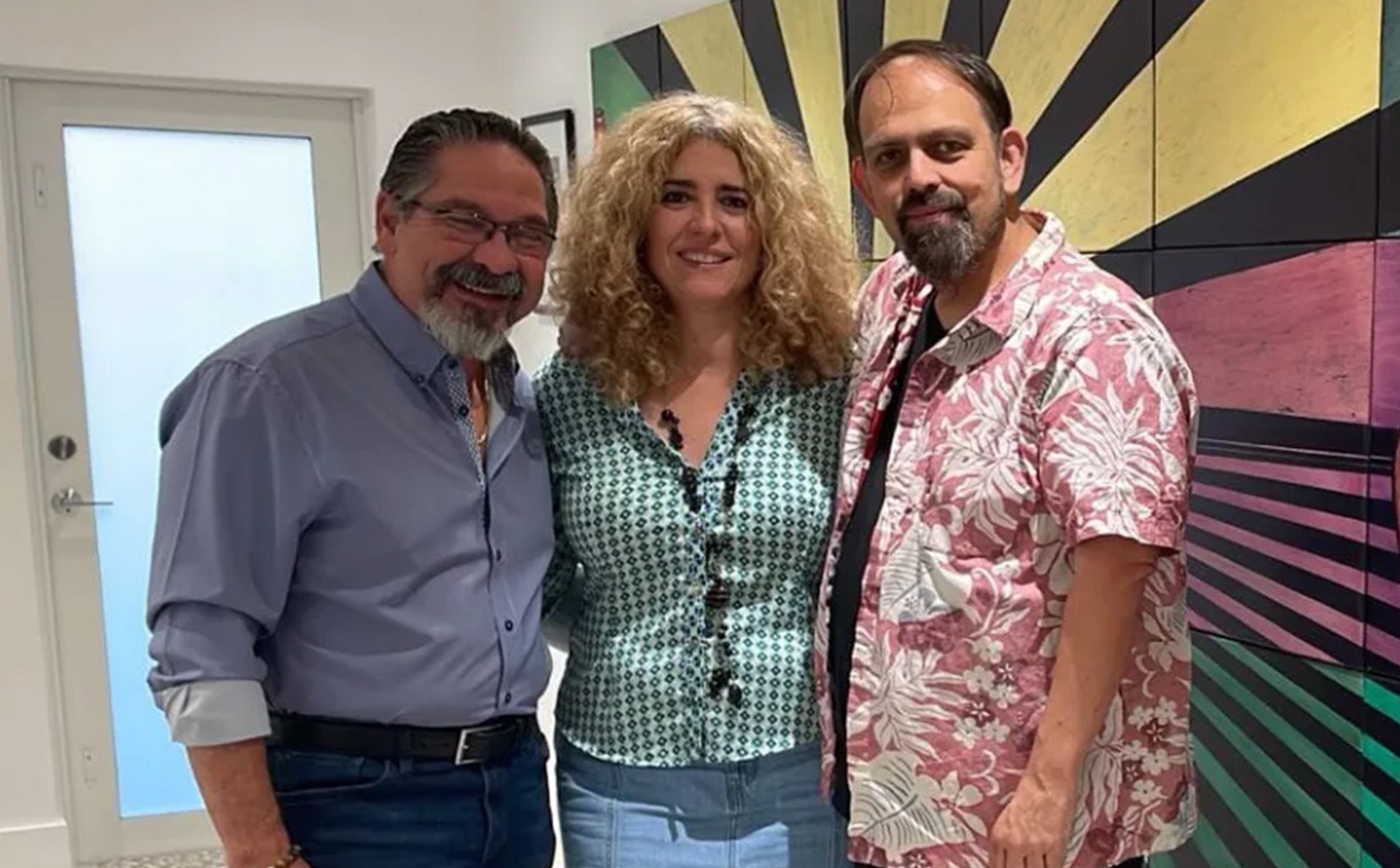


In a recent visit to the Museum of Contemporary Art of the Americas (MoCAA) in Kendall, Florida, acclaimed Mexican performance artist and curator Pancho López met with museum director Leonardo Rodríguez and Cuban artist Ivonne Ferrer to explore future avenues of cultural collaboration. The meeting focused on forging artistic exchanges between the vibrant Mexican performance scene and MoCAA’s growing network of Latin American artists and institutions.
Facilitating this encounter was Artcrónica, a key partner of MoCAA and one of Latin America’s most respected platforms for contemporary art discourse. Based in Mexico City and directed by the Cuban critic and editor David Mateo Núñez, Artcrónica has played a pivotal role in connecting institutions across borders, aligning with MoCAA and the Rodríguez Collection’s ongoing commitment to promoting Latin American art as a transnational, unified force.
Pancho López (b. 1972, Mexico City) is widely recognized as a leading figure in contemporary performance art in Mexico. Known for his ironic and thought-provoking work, López uses the body as a medium to address themes of everyday life, social ritual, and emotional experience. He is the founder of the EXTRA! International Performance Festival and has presented his work in countries such as Germany, China, Canada, and the U.S. Landmark projects like Picnic Formal and Sal de Mesa have positioned him at the forefront of performative critique. Beyond his artistic practice, López is also a cultural manager, journalist, and educator, currently heading the Cultural Management program at the Universidad de la Comunicación in Mexico City.
David Mateo Núñez (b. 1965, Matanzas, Cuba) is a central voice in the Cuban and broader Latin American art worlds. A journalist by training and a critic by vocation, Mateo has spearheaded influential publications including Loquevenga, Dédalo, and Arte por Excelencias, and is the founder of Artcrónica (2014), a digital journal devoted to amplifying the voices and practices of artists from the Americas and the Caribbean. His curatorial and editorial work, deeply rooted in transgenerational and cross-cultural engagement, reinforces his long-standing mission: to foster critical reflection, promote regional artists on the international stage, and strengthen dialogue across linguistic and national divides.
As MoCAA continues to evolve as a platform for dynamic cultural exchange, collaborations like this one underscore a broader vision—one that transcends geography to celebrate the diversity, vitality, and shared narratives of Latin American contemporary art.



